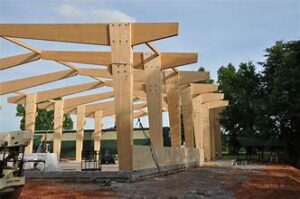
As we advance into 2024, the timber industry stands at the cusp of transformative change. With a growing emphasis on sustainability, technological advancements, and evolving market dynamics, the future of timber is poised for significant shifts. This article delves into the latest market trends and innovations that are shaping the timber industry, ensuring it remains competitive and eco-friendly.
1. Rising Demand for Sustainable Timber
In recent years, there has been a noticeable shift towards sustainability in construction and design. Consumers and businesses alike are prioritizing environmentally friendly practices. Timber, often seen as a sustainable alternative to concrete and steel, is gaining traction due to its lower carbon footprint and renewability.
In 2024, the demand for sustainably sourced timber is expected to increase. Certifications such as the Forest Stewardship Council (FSC) and the Programme for the Endorsement of Forest Certification (PEFC) are becoming more important to consumers and companies. These certifications ensure that timber products are sourced from responsibly managed forests, which helps in preserving biodiversity and reducing deforestation.
2. Technological Innovations Driving the Industry
The timber industry is experiencing a technological renaissance, with innovations that enhance both the efficiency and performance of timber products. Some key technological advancements include:
- Cross-Laminated Timber (CLT): CLT is revolutionizing the construction industry with its strength and versatility. Made by stacking layers of timber at right angles and bonding them together, CLT panels provide excellent structural performance and fire resistance. This innovation allows for taller wooden buildings and opens up new architectural possibilities.
- Mass Timber Construction: Mass timber, including CLT and Glue-Laminated Timber (Glulam), is gaining popularity for its sustainability and aesthetic appeal. These materials are being used in larger-scale projects, including commercial and residential buildings, as they offer both environmental and economic benefits.
- Digital Timber Design: Advances in digital technology have introduced sophisticated design tools that facilitate the precise cutting and assembly of timber components. Building Information Modeling (BIM) and computer numerical control (CNC) machines are streamlining the design and manufacturing processes, leading to higher accuracy and reduced waste.
3. Market Trends Influencing Timber
Several market trends are shaping the timber industry in 2024. Understanding these trends is crucial for businesses and investors looking to navigate the evolving landscape:
- Urbanization and Green Building: As urban areas continue to expand, there is a growing demand for green building materials. Timber’s aesthetic qualities and sustainability make it an attractive choice for eco-friendly construction. Urban planners and architects are increasingly incorporating timber into cityscapes, driven by both regulatory requirements and consumer preferences for greener buildings.
- Supply Chain Innovations: The timber supply chain is becoming more transparent and efficient due to technological advancements. Innovations such as blockchain technology are being used to track the origin of timber products, ensuring they are sourced responsibly. Improved logistics and transportation methods are also reducing lead times and costs.
- Consumer Preferences: Modern consumers are more informed and concerned about the environmental impact of their purchases. This shift in consumer behavior is pushing companies to adopt more sustainable practices and offer eco-friendly products. Timber, with its natural and renewable properties, aligns well with these preferences.
4. Challenges and Opportunities
While the future of timber looks promising, the industry faces several challenges that need to be addressed:
- Supply Constraints: There is a growing concern about timber supply due to factors such as climate change and forest management practices. Companies need to explore alternative sources and methods to ensure a steady supply of quality timber.
- Regulatory Compliance: As environmental regulations become stricter, the timber industry must stay compliant with evolving standards. Investing in sustainable practices and obtaining relevant certifications will be crucial for maintaining market access and consumer trust.
- Innovation Adoption: Embracing new technologies and innovations can be costly. However, the long-term benefits of increased efficiency, reduced waste, and enhanced product performance outweigh the initial investment. Companies that lead in adopting these innovations will gain a competitive edge.
5. Looking Ahead
The timber industry in 2024 is set to witness significant changes driven by sustainability, technological advancements, and evolving market demands. As the industry adapts to these shifts, it is crucial for businesses to stay informed and agile. By focusing on sustainable practices, embracing technological innovations, and understanding market trends, the timber industry can thrive in the coming years.


